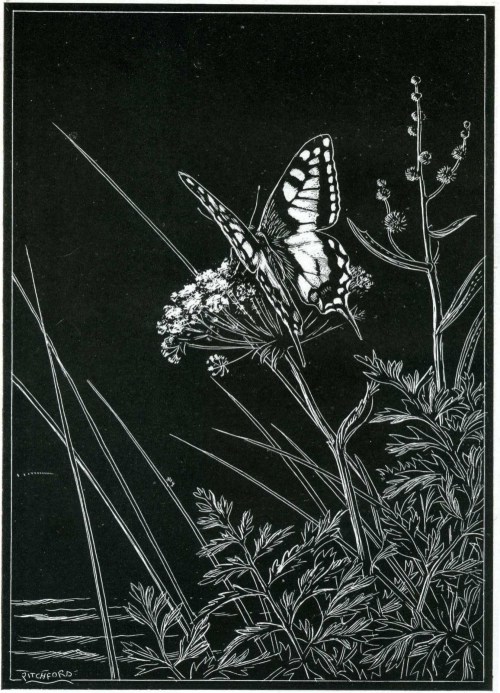
Silver Y Moth, Autographa gamma (Linnaeus 1758)


Silver Y Moth, Autographa gamma (Linnaeus 1758)

Hummingbird hawk-moth, Macroglossum stellatarum (Linnaeus, 1758)
(click for larger)
Russian Bee Stamps 2005
British Bee Stamps 2015
Elsewhere other-accessible
• Royal Mail bee stamps designed to raise awareness of species

Illustration of a swallowtail butterfly (Papilio machaon) by Denys Watkins-Pitchford (1905-90), who used the pen-name of BB for books like The Little Grey Men (1942)
It caught my eye, it caught my eye,
That fluttering flake of fallen sky.
It rode the wind as cars bored by
And did not die:
And shall not die,
That fluttering flake of fallen sky.
Post-Performative Post-Scriptum
A poem written months ago about a briefly glimpsed blue butterfly flying along — and over — a busy road. I don’t know the species, but Polyommatus icarus seems a reasonable guess.
An interesting bio-paradox from the world’s premier papyrocentric purveyor of progressive performativity:
Vast stretches of roadside have been transformed. Where there were thick clumps of grass, there are low-growing wildflowers such as black medic, birds-foot trefoil and red clover. The verges are cut two or three times a year, not 12, saving the council tens of thousands of pounds. Butterflies and other invertebrates have returned in their droves. […]
The process is simple: cut infrequently, ideally, just twice a year in spring and then late summer once plants have bloomed and seeded; remove the clippings to gradually reduce the fertility of the soil and prevent a buildup of mulch; repeat, wait, and enjoy the resurgent wildlife and flowers. […]
“As fertility declines in a soil, biodiversity increases. At first that seems a little counterintuitive because you imagine the more you pour into a soil, the more plants that can grow. That’s not how it works in the natural system. In more fertile systems, a few species dominate and they swamp and smother everything else.”
Grass cuttings are almost always left where they fall along the thousands of miles of road verges that are maintained by law in the UK. Over time, the resulting mulch increases the fertility of the soil, meaning the grass grows with increasing vigour and needs to be cut more frequently. The cut and collect method breaks the cycle. — On the verge: a quiet roadside revolution is boosting wildflowers, The Guardian, 14iii2020
“Adonis, M. Cytheris, and M. Menelaus, is indescribable; the eyes are pained as they gaze upon it; yet there is said to be an unnamed species from the emerald mountains of Bogota, of which a single specimen is in a private cabinet in London, which is far more lustrous than these.” — The Romance of Natural History (1861), Philip Henry Gosse
When they opened the trap, I was astonished by the range and beauty of their catch. There were pink and olive elephant hawkmoths; a pine hawkmoth, feathered and ashy; a buff arches, patterned and gilded like the back of a barn owl; flame moths in polished brass; the yellow kites of swallow-tailed moths; common emeralds the colour of a northern sea, with streaks of foam; grey daggers; a pebble prominent; heart and darts; coronets; riband waves; willow beauties; an elder pearl; small magpie; double-striped pug; rosy tabby. The names testify to a rich relationship between these creatures and those who love them. — George Monbiot, “Our selective blindness is lethal to the living world”, The Guardian, 20xii2017

Various species of Hoverfly (click for larger)
Papyrocentric Performativity Presents:
• God Guide – A Guide to Tolkien, David Day (Octopus 1993)
• The Catcher and the Rye – The Biology of Flowers, Eigil Holm, ill. by Thomas Bredsdorff and Peter Nielsen (Penguin Nature Guides 1979)
• Dayzed and Contused – The Greatest Footballer You Never Saw: The Robin Friday Story, Paul McGuigan and Paolo Hewitt (Mainstream 1997)
Or Read a Review at Random: RaRaR